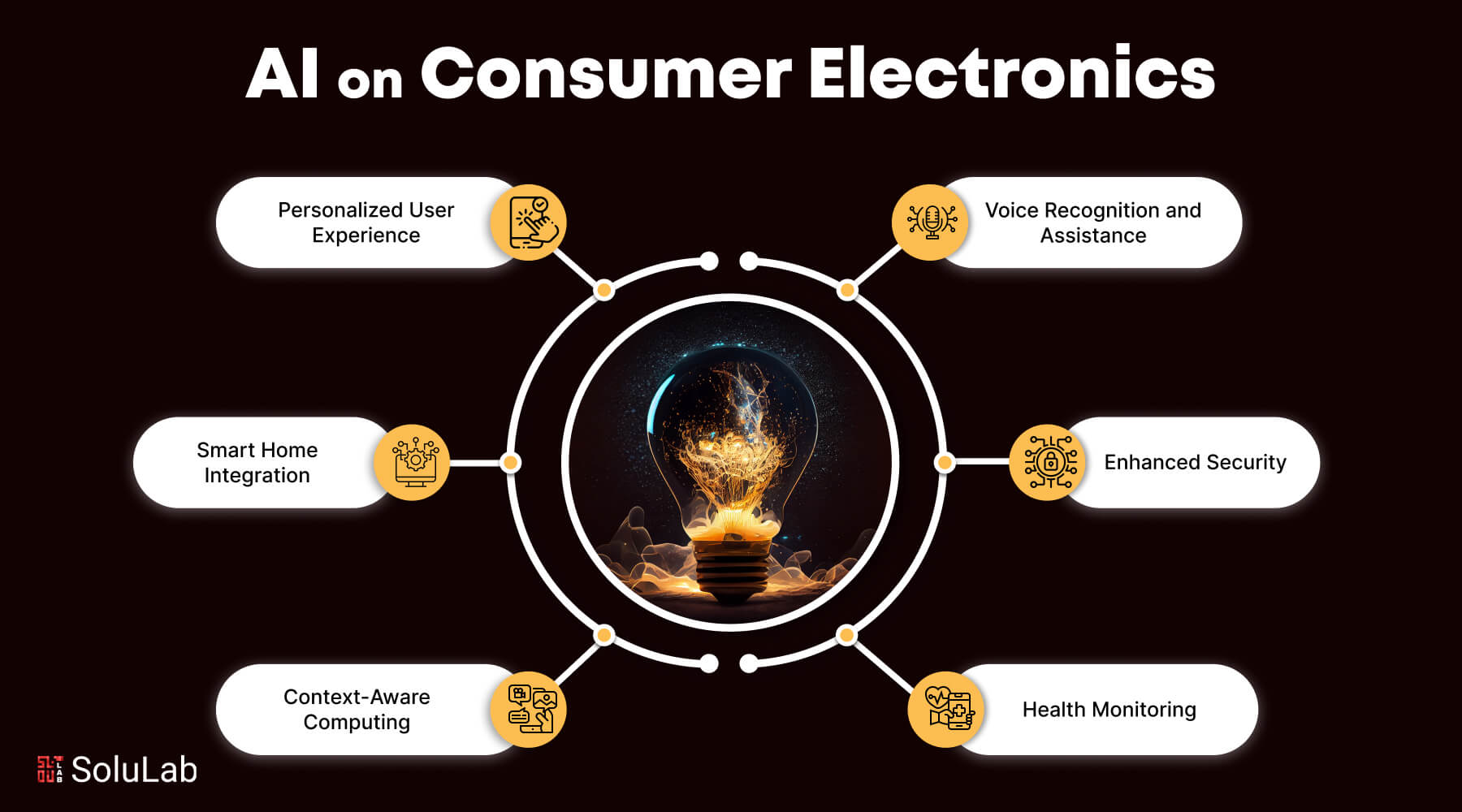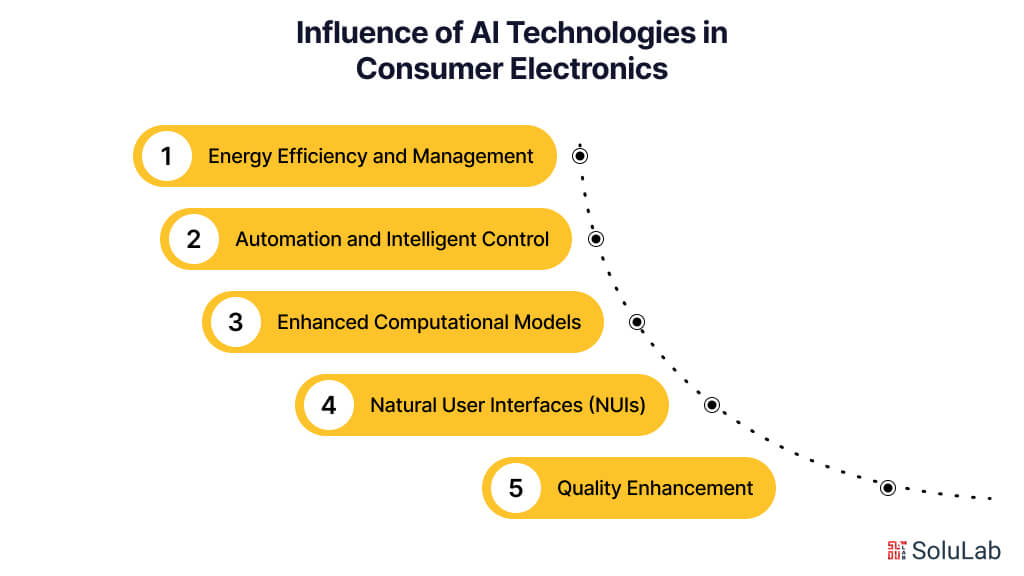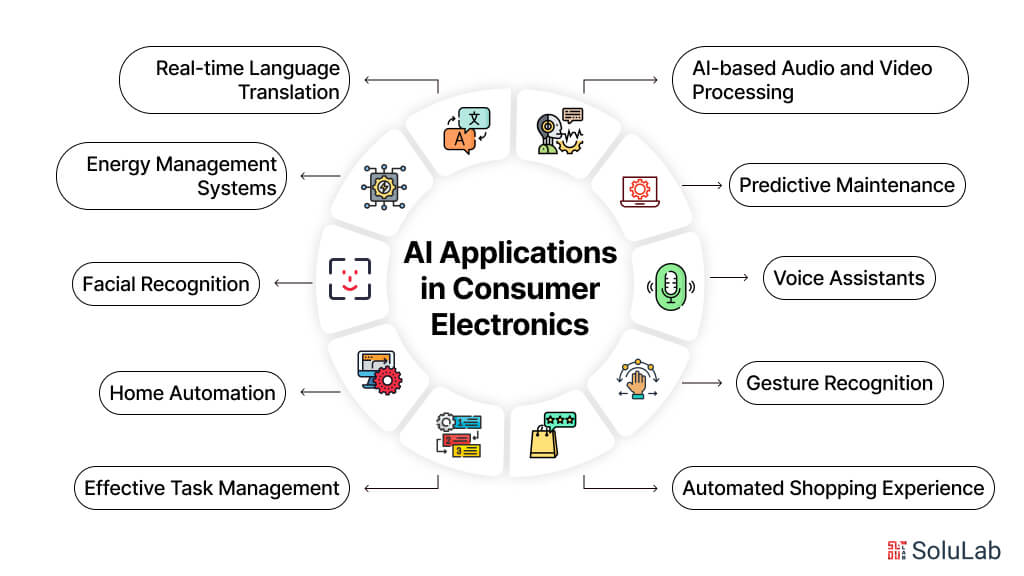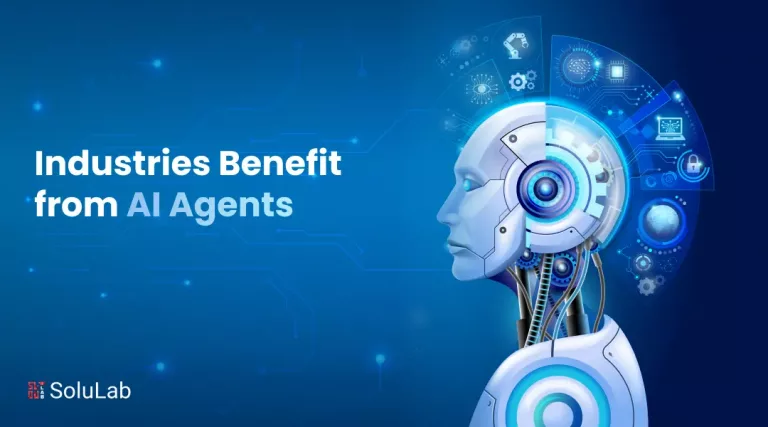
In today’s networked society, incorporating artificial intelligence (AI) into consumer electronic devices is fundamentally changing our daily lives. AI integration has a significant impact on how we live, ranging from simplifying home duties to empowering personal health management. Smart home automation, as demonstrated by devices such as Amazon’s Alexa, has changed the way we communicate in our living spaces by providing flawless control over a variety of home activities via simple voice commands.
Wearables with AI capabilities enable people to actively manage their fitness and health even when they are not in their homes. These gadgets track several facets of physical activity, keep an eye on health, and offer users tailored insights to support them in reaching their wellness objectives. Wearables with AI capabilities are revolutionizing the idea of personal health management because of their ability to blend in seamlessly with our everyday activities. According to Gitnux, the market for consumer electronics is expected to reach $37.2 billion by 2027 thanks to artificial intelligence, with a projected 14.2% compound annual growth rate (CAGR) from 2020 to 2027.
AI in consumer electronics improves efficiency and convenience while revolutionizing our daily interactions with technology. These technologies have the potential to significantly improve the human experience and further enrich our lives as they develop and innovate.
In this blog, we will examine artificial intelligence (AI) in consumer electronics, highlighting its applications, advantages, and ways it affects them. So, let’s get started!
What is Consumer Electronics?
Consumer electronics, also known as consumer tech, refers to electronic devices and products that are designed for personal use and are typically sold to individuals or households. These products are designed to make everyday life easier, more convenient, and more enjoyable. Consumer electronics can range from simple devices like clocks and radios to complex devices like smartphones, laptops, and gaming consoles.
In general, consumer electronics are characterized by their ability to be used in a personal or domestic setting, and they are designed to meet specific needs or desires of consumers. Some common examples of consumer electronics include:
- Audio Devices: Headphones, speakers, MP3 players, and music streaming devices
- Computing Devices: Desktop computers, laptops, tablets, and smartphones
- Gaming Devices: Consoles, handsets, and accessories
- Imaging Devices: Cameras, camcorders, and scanners
- Entertainment Devices: Televisions, DVD players, and streaming devices
- Communication Devices: Phones, modems, and routers
- Home Appliances: Refrigerators, air conditioners, washing machines, and microwaves
Consumer electronics have become an integral part of modern life, with many people relying on them to stay connected with others, access information and entertainment, and manage their daily routines. The development and production of consumer electronics are driven by technological advances, changing consumer preferences, and the need for innovative solutions to everyday problems.
Features of AI in Consumer Electronics
Artificial Intelligence electronics have introduced many advanced features, significantly enhancing user experience and functionality across various devices. Here are some key features of AI in consumer electronics:
1. Personalized User Experience: AI algorithms analyze user behavior and preferences, allowing devices to offer personalized recommendations and settings. For example, smart TVs can suggest shows based on viewing history, and smartphones can customize app usage based on individual habits.
2. Voice Recognition and Assistance: Voice-controlled virtual assistants like Amazon’s Alexa, Google Assistant, and Apple’s Siri have become integral to many consumer electronics. These AI-powered assistants enable users to control devices, search for information, and manage tasks using simple voice commands.
3. Smart Home Integration: AI facilitates seamless integration and control of various smart home devices. From adjusting thermostats and lighting to managing security cameras and door locks, AI-driven systems create a cohesive and efficient smart home environment.
4. Enhanced Security: AI enhances the security features of consumer electronics through advanced facial recognition, biometric authentication, and anomaly detection. These technologies provide robust security for devices like smartphones, laptops, and smart home systems, protecting against unauthorized access.
5. Context-Aware Computing: AI enables devices to understand and respond to contextual information. For instance, smart cameras can recognize specific objects or people, and adaptive sound systems can adjust audio settings based on the environment.
6. Health Monitoring: AI-powered wearable devices monitor health metrics such as heart rate, sleep patterns, and physical activity. These devices provide valuable insights and alerts, helping users maintain their health and well-being.
AI Technologies in Consumer Electronics
The following are some popular AI technologies seen in consumer electronics:
1. Machine Learning (ML): In consumer electronics, machine learning (ML) algorithms are frequently used for tasks including image identification, natural language processing, and predictive analytics. They allow gadgets to function better over time without the need for explicit programming by allowing them to learn from data.
2. Natural Language Processing (NLP): NLP makes it possible for technology to comprehend and react to human language, which makes it easier to communicate with chatbots, voice assistants, and smart speakers. By providing voice commands, analysis of sentiment, and language translation, it enhances customer service.
3. Computer Vision: Algorithms for computer vision enable systems to comprehend and evaluate visual data, such as pictures and videos. These methods make it possible for applications on a variety of devices to have capabilities like object identification, scene interpretation, and facial recognition.
4. Speech Recognition: Speech recognition technology translates spoken words into text so that consumer electronics can have voice-activated user interfaces. It is used for the recognition and processing of voice commands in gadgets such as automobile entertainment systems, smart speakers, and cell phones.
5. Reinforcement Learning: Through the use of trial-and-error interactions with their surroundings, reinforcement learning algorithms allow machines to learn and make judgments. They are utilized for autonomous navigation and task performance in devices like robotic vacuum cleaners and drones.
6. GANs: Deep learning algorithms known as Generative Adversarial Networks (GANs) are used to create artificial data, images, or content. They are used in consumer electronics products for tasks like style transfer, content development, and image synthesis.
Influence of AI Technologies in Consumer Electronics

The impact of Artificial Intelligence (AI) on consumer electronics is profound, fundamentally changing how devices operate, interact with users, and integrate into our daily lives through various technical advancements.
-
Enhanced Computational Models
AI significantly boosts the computational abilities of consumer electronics by integrating complex algorithms that learn and adapt from data. These algorithms, ranging from simple predictive models for personalizing user interfaces to sophisticated neural networks for advanced image and speech recognition, are built on foundations like machine learning (ML), deep learning (DL), and reinforcement learning (RL). This allows AI-powered consumer electronics to process and interpret vast amounts of information swiftly and efficiently.
-
Automation and Intelligent Control
AI has driven a major shift towards automation in consumer electronics. Devices can now perform tasks autonomously that previously required human intervention. For instance, smart thermostats learn user behaviors and predict future needs to automatically adjust home temperatures. This involves processing sensory data through AI to make real-time decisions and adjustments, exemplifying AI workflow automation.
-
Natural User Interfaces (NUIs)
AI-powered consumer electronics such as natural language processing and computer vision have revolutionized user interfaces in consumer electronics, making interactions more natural and intuitive. Devices equipped with NUI capabilities can understand and respond to voice commands, gestures, and visual cues, enabling users to communicate with their devices seamlessly. These advancements in NUIs enhance the user experience by simplifying interaction methods and making devices more accessible to a wider range of users.
-
Energy Efficiency and Management
AI-driven optimization techniques play a significant role in improving energy efficiency in consumer electronics. By analyzing usage patterns, environmental factors, and user behavior, AI algorithms can dynamically adjust power settings to minimize energy consumption without compromising performance. This approach not only reduces the environmental impact of electronic devices but also helps users save on energy costs while ensuring that devices operate efficiently for longer periods.
-
Quality Enhancement
AI technology has been instrumental in enhancing the quality of multimedia output in consumer electronics, particularly in devices like cameras and displays. By leveraging advanced image processing algorithms and trained models, devices can improve various aspects of image and video quality, such as contrast, color accuracy, sharpness, and noise reduction. These enhancements result in more visually appealing and professional-looking media output, enriching the user experience and expanding creative possibilities for consumers.
What Changes Is AI Bringing About in the Consumer Electronics Sector?
Artificial intelligence is revolutionizing consumer electronics by providing inventive solutions for a range of gadgets. Let’s examine how artificial intelligence electronics development is changing various technological devices:
- Smartphones: By utilizing edge computing, incorporating AI helps smartphones process enormous volumes of raw data locally. This eliminates the need to transfer data to the cloud and enables real-time analytics and decision-making. Smartphone speed and user experience are thus improved as a result of their ability to act swiftly on insights obtained straight from the device. Handsets with machine learning capabilities can create individualized profiles by learning about the habits of their users.
- Smart Refrigerators: Contemporary models use object recognition technology to monitor and examine the contents within, going beyond simple temperature maintenance. With this feature, smart refrigerators can create shopping lists, keep track of the amount of food in the fridge, and text users with alerts. They connect with voice assistants and keep intelligent inventories so that voice commands may be used to operate them effortlessly.
- Smart Ovens: With built-in cameras and machine learning algorithms, these ovens can recognize different kinds of food and make recipe recommendations based on the items that are on hand. By modifying parameters and temperatures under customer choices, they automate the cooking process. Smart ovens may vary between cooking modes and adjust to the user’s preferences over time with little to no input from the user.
- Smart Washing Machines: AI improves the energy consumption, fabric care, and efficiency of smart washing machines. These intelligent appliances can anticipate cycle times, change washing conditions, and distinguish different types of fabric. They also automatically restock supplies like detergent, notify users when maintenance is needed, and self-diagnose. The ability to integrate voice assistants and mobile apps allows consumers to remotely control washing cycles.
- Smart TVs: Voice-activated navigation, tailored content recommendations, and sophisticated picture processing are all features of AI-powered smart televisions. They use watching patterns to recommend appropriate TV series and films, and voice assistants, like Google Assistant and Amazon Alexa, allow for hands-free operation.
- Smart Speakers: AI is used by gadgets like Google Home and Amazon Echo to offer voice-activated virtual assistants, music streaming, and control over smart homes. They respond to queries, comprehend commands in plain language, and easily interface with other smart home gadgets to enable automation.
- Smartwatches: Artificial intelligence-enhanced smartwatches measure health and fitness parameters, track data, and offer tailored coaching and insights. They evaluate activity patterns, spot anomalies, and provide practical wellness advice using machine learning algorithms.
- Security Systems with Smart Cameras: AI-powered security cameras are able to differentiate between various activities, producing alerts and acting in real-time to safeguard assets. These systems can be trained to identify particular occurrences and react appropriately by using AI algorithms and physical object monitoring, which improves security.
The benefits of integrating AI in consumer electronics devices are numerous, ranging from greater security and tailored experiences to increased efficiency and expanded functionality. Our everyday interactions with technology are changing as a result of these customer service automation advancements, which also make our gadgets smarter, more user-friendly, and more attentive to our requirements.
AI Applications in Consumer Electronics

AI has invaded many elements of consumer electronics, improving user interactions and product capabilities in linked gadgets.
1. Voice Assistants: Voice-activated virtual assistants, such as Amazon Alexa, Apple Siri, and Google Assistant, have become commonplace in consumer devices. These AI-powered consumer electronics assistants have improved their ability to understand and execute various commands and questions as a result of constant learning from user interactions. Using NLP, they can interpret complex words, languages, and accents, resulting in a seamless and intuitive user experience. Hands-free control allows consumers to easily operate a wide range of smart devices, from speakers and smartphones to home automation systems, increasing ease and accessibility in everyday life.
2. Facial Recognition: Artificial intelligence (AI) has greatly improved consumer electronics, especially in the areas of object identification, scene understanding, and facial recognition. Smartphones prioritize security while granting consumers simple access to their devices through the use of facial recognition technology for smooth safe biometric authentication. Furthermore, AI classifies pictures intelligently depending on the faces it recognizes, making it easier to organize and retrieve private images. Artificial intelligence (AI)-enabled security cameras are more successful at identifying and detecting people, boosting the efficacy of stem monitoring without sacrificing home security and privacy. With the use of this technology, possible risks can be quickly identified, protecting residential areas from harm.
3. Predictive Maintenance: AI systems keep an eye on how well electrical equipment is operating and can identify possible problems before they develop. Because these algorithms continuously track performance parameters like temperature, pressure, and energy usage, they can identify anomalies that may indicate future breakdowns. Because of the early detection, prompt action is possible, enabling repairs or preventative maintenance to be performed before the equipment malfunctions. This reduces maintenance expenses and maximizes user happiness by extending the device’s lifespan and minimizing downtime.
4. Gesture Recognition: With hand gestures and hand movements, users can operate electronic gadgets thanks to AI-based gesture recognition. Wearable technology, game consoles, smart TVs, and other consumer electronics can all benefit from this invention. Without the use of physical input devices like remote controllers or touchscreens, users can traverse menus, control playback, and execute commands by merely waving their hands or using particular gestures. By offering a hands-free, intuitive interface, this technology improves user accessibility and convenience, particularly in situations when entering data manually may be difficult or impossible. Furthermore, gesture detection makes it possible for users to interact with material naturally and intuitively, which enhances the overall user experience, especially in gaming and entertainment scenarios.
5. Home Automation: Home automation, an AI electronic system, has revolutionized smart home technology, turning residences into highly intelligent living spaces. Interconnected devices now seamlessly adjust lighting, temperature, and security, significantly improving efficiency and comfort. These AI-powered systems manage home appliances and security, creating a responsive environment tailored to individual needs. Consequently, homes can anticipate and fulfill our requirements, simplifying daily routines and enhancing the overall living experience.
6. AI-based Audio and Video Processing: With its advanced algorithms, AI is bringing in a new wave of creative thinking and revolutionizing the audio and video processing market in consumer electronics. These algorithms produce realistic audio experiences, reduce background noise, improve voice clarity, and improve sound quality. By using AI and ML-powered noise cancellation algorithms, consumer electronics can reduce undesired noise interference and guarantee crystal-clear audio output. Moreover, AI and ML models can produce high-quality frames using lower-resolution inputs since they receive instruction to analyze both high- and low-resolution video frames. The overall watching experience is improved by these super-resolution algorithms, which dramatically improve video quality by creating crisper and more visually appealing images.
7. Energy Management Systems: Artificial Intelligence plays a critical role in improving building energy use with advanced energy management systems. These systems use artificial intelligence (AI) algorithms to evaluate sensor and smart meter data, allowing for dynamic adjustments to lighting, heating, and cooling systems that optimize efficiency and reduce wasteful energy use. AI makes sure that energy usage is in line with occupancy patterns and environmental circumstances by continuously tracking and adapting from real-time data. This results in significant cost savings and less environmental effect. Through the integration of AI in consumer electronics, users can improve comfort and productivity while empowering them to design sustainable living spaces.
8. Real-time Language Translation: Artificial Intelligence (AI) integration makes it possible for consumer electronics devices to translate text in real-time, removing language barriers and promoting communication between people who speak different languages. A set of AI-enabled earphones, for instance, can interpret spoken conversations between users of several languages instantaneously.
9. Effective Task Management: AI-capable gadgets can assist users in handling chores more effectively. Using voice commands and calendar events, an AI-connected smart home hub can make and modify to-do lists, set reminders, and book appointments. Daily routines are streamlined, ensuring that chores are quickly executed without requiring manual input, thereby boosting user productivity and time management.
10. Automated Shopping Experience: AI-powered devices can provide automated shopping assistance. An AI-driven smart refrigerator, for example, keeps track of food stock, makes recipe recommendations based on components that are on hand, and places automated grocery orders when supplies run low. Meal planning and grocery buying are made easier by seamless integration with online shopping platforms, which saves consumers time and guarantees they always have the items they need on hand.
Related: Generative AI in Automotive Industry
Benefits of AI in Consumer Electronics
Integrating artificial intelligence in electronics provides numerous significant benefits:
- Better User Experience: AI in electronics helps devices understand what you like and how you behave, making interactions more personalized and enjoyable. This makes gadgets easier and more fun to use.
- Greater Efficiency: AI optimizes processes and automates tasks, making devices work faster and consume less energy. This saves time and resources.
- More Automation: AI-driven automation reduces the need for manual input, allowing devices to handle tasks on their own. This frees up your time and takes care of mundane chores, boosting convenience and productivity.
- Improved Communication: AI can streamline communication, like transcribing voicemails into text, translating messages, and prioritizing notifications based on importance, making it easier to stay connected.
- Advanced Features: AI enables gadgets to do complex tasks that were not possible before, like voice recognition, image processing, understanding natural language, and making predictions, enhancing overall functionality.
- Optimized Performance: AI analyzes data in real-time to ensure devices perform at their best, leading to better resource use, higher reliability, and overall improved performance.
- Cost Savings: AI can help reduce costs by lowering energy consumption and making devices more efficient. It also helps manufacturers reduce production costs and streamline operations.
- Valuable Data Insights: AI processes large amounts of data from devices to provide insights into user behavior and trends. This helps in making better product development decisions and strategies.
- Future-Ready: AI keeps devices up-to-date and relevant by allowing them to adapt and evolve through software updates, ensuring they stay ahead in the tech world.
Overall, AI in consumer electronics makes devices smarter, more efficient, and capable of doing more, driving innovation and shaping the future of technology.
Concluding Remarks
The impact of AI on consumer electronics is transformative, making our interactions with technology more intuitive, efficient, and personalized. AI has enabled devices to learn from user behavior, optimize performance, and automate routine tasks, significantly enhancing the overall user experience. From smart home systems that anticipate our needs to advanced communication tools that streamline our daily interactions, AI-powered electronics are revolutionizing how we live and work. As AI continues to evolve, it will undoubtedly unlock even more innovative capabilities, driving the future of consumer technology.
However, the integration of AI in consumer electronics comes with its own set of challenges, including data privacy concerns, the need for robust security measures, and the complexity of developing reliable AI algorithms. SoluLab, a leading AI development company, is equipped to address these challenges by providing state-of-the-art AI solutions tailored to the specific needs of consumer electronics. With expertise in building secure, efficient, and scalable AI systems, SoluLab ensures that your devices not only meet but exceed user expectations. To learn more about how SoluLab can help you harness the power of AI in your products, contact us today.
FAQs
1. How is AI enhancing user experience in consumer electronics?
AI enhances user experience by learning from user behavior and preferences, allowing devices to offer personalized interactions and recommendations. As a result, using gadgets becomes simpler and more pleasurable and becomes more intuitive and user-friendly.
2. What are the benefits of AI-driven automation in consumer electronics?
AI-driven automation reduces the need for manual input, enabling devices to perform tasks autonomously. This increases convenience and productivity by freeing up time for users and eliminating mundane chores.
3. What advanced features do AI-powered consumer electronics offer?
Electronics with artificial intelligence (AI) built-in offer cutting-edge capabilities including voice recognition, picture processing, natural language comprehension, and predictive analytics. These capabilities expand the functionality and versatility of devices, allowing them to perform complex tasks that were previously not possible.
4. What challenges are associated with integrating AI into consumer electronics?
Challenges include data privacy concerns, the need for robust security measures, and the complexity of developing reliable AI algorithms. Ensuring that AI systems are secure, efficient, and scalable is crucial for their successful integration.
5. How can SoluLab help overcome the challenges of integrating AI in consumer electronics?
SoluLab, a leading AI development company, provides tailored AI solutions to address these challenges. With expertise in building secure and efficient AI systems, SoluLab ensures that your devices meet and exceed user expectations.





